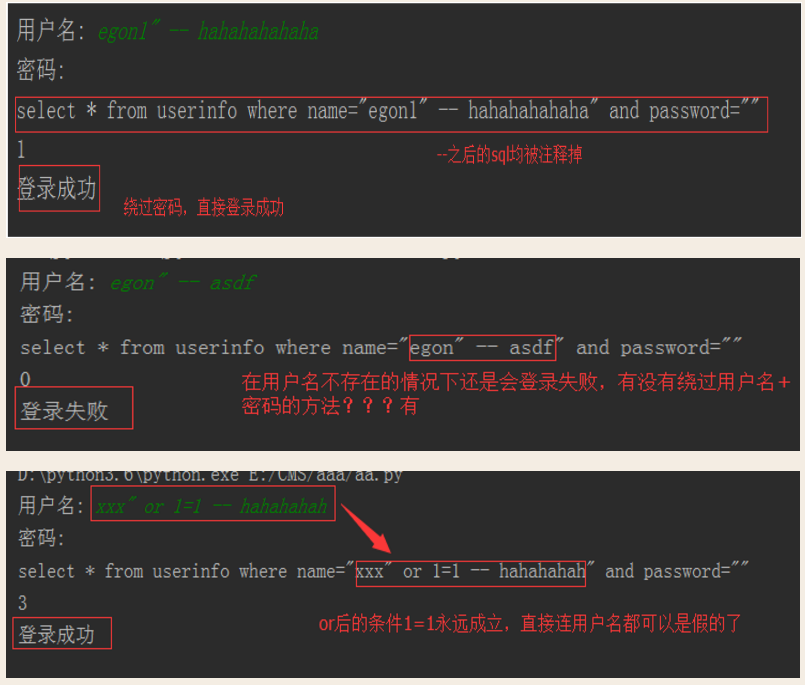一、子查询
子查询是将一个查询语句嵌套在另一个查询语句中。
内层查询语句的查询结果,可以为外层查询语句提供查询条件。
子查询中可以包含:in ,not in ,any,all,exists 和 not exists等关键字
还可以包含比较运算符:=、!=,>,<
二、navicat 软件的应用
三、pymysql模块
improt pymysql
conn=pymysql.connect(host='localhost',user='root',password='1',database='db1','charset='utf8')
coursor=conn.cursor()
sql='select * from user where name="%s" and password="%s"'%(user,pwd)
print(sql)
res=cursor.execute(sql)#执行sql语句,返回sql查询成功的记录数目
print(res)
coursor.close()
conn.close()
if res:
print('登录成功')
else:
print('登录失败)
二、execute()之sql注入
符号--会注释掉它之后的sql,正确的语法,--后至少有一个任意字符
根本原理,就根据程序的字符串拼接name='%s',我们输入一个xx'--hh
就是用xx加‘在程序中模拟拼接一个判断条件name='xx'--aa'
sql注入:用户存在,绕过密码
egon'--任意字符
sql注入:用户不存在,绕过用户与密码
xx' or '1=1'--任意字符

解决方法,
原来是我们对sql进行字符串进行拼接
现在execute帮我们做了字符串拼接,我们不用在sql语句中为%s加引号
res=cursor.execute(sql,[user,pwd])
scroll绝对移动 absolute
scroll相对移动 relative
cursor.fetchone()#查看第一条记录
cursor.fetchmany(2)#从第一条开始查两条
cursor.fetchall()查看剩下的所有记录
增:
conn.cursor()
sql='insert into user(name,pwd) value('root','123')'
res=cursor.execute(sql)
conn.commit():#只有提交后才能发现表中插入记录成功
cursor.close()
conn.close()